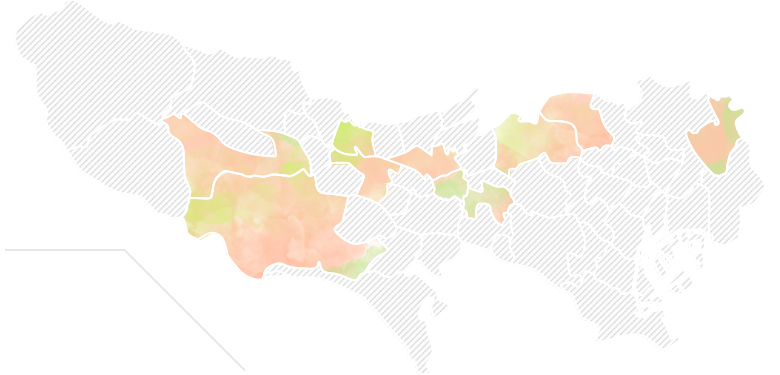-
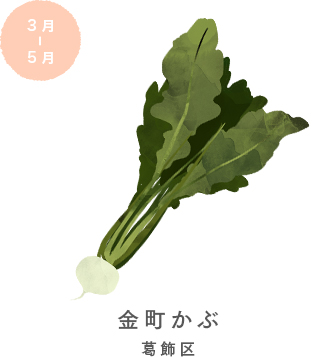
These extremely early-season, small turnips were cultivated and grown in Tokyo’s Kanamachi (now Higashi-Kanamachi, Katsushika Ward) in the late Meiji era. The small turnips grown across the country now are cultivars of kanamachi turnips. They taste delicious stewed and pickled.
-
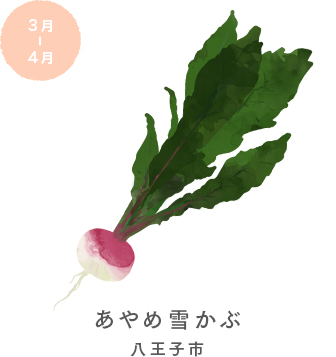
This cultivar was only developed recently. Their stems are reddish purple, and the roots are white, creating a beautiful contrast. The flesh of the turnip is fine and very sweet, with a wonderful flavor. They turn a delicate pink when pickled.
-
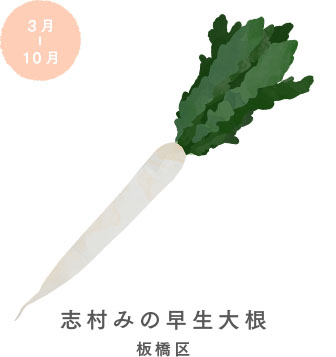
Itabashi Ward produces a large number of these Japanese radishes, which are one of the main Edo and Tokyo vegetables. The industrialization that followed the Great Kanto Earthquake put an end to Japanese radish cultivation in the area for a long period of time, but growing resumed several years ago. These Japanese radishes are thinner and hotter than regular Japanese radishes.
-
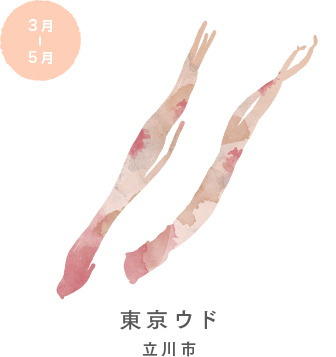
Tokyo spikenard has been grown since the late Edo era. It is currently grown in Kita-Tama area. It has a roughly 95% water content, giving it a crisp and crunchy texture. It goes well with dressing, and in kimpira, tempura, and salad.
-
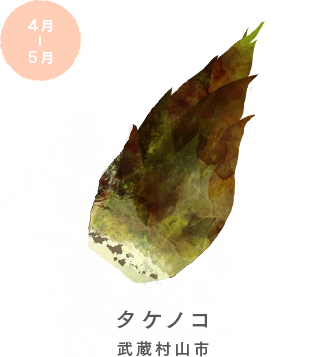
The culinary use of bamboo shoots spread across Japan in the middle of the Edo era. Bamboo shoots grow very quickly, which places a premium on the short period of time when raw bamboo shoots can be eaten. They have excellent fragrance and texture, making them great for Tosa stew and bamboo shoot rice.
-
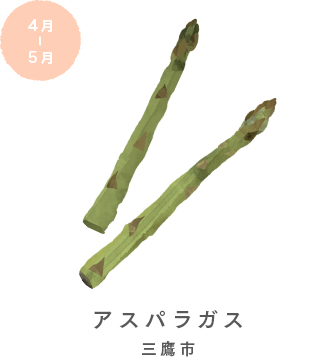
Many farms in Mitaka City grow asparagus, most of which is shipped to farmer’s markets. Freshness is key for asparagus, and because the asparagus is grown in Tokyo it can be quickly supplied to retailers, making it possible for consumers to enjoy tasty asparagus.
-

Norabo greens were already grown in various areas by the start of the Edo era. They were grown in large quantities in the Nishi-Tama area of Tokyo, and there are records indicating that they saved many people during the Great Tenmei and Tenpo famines.
-
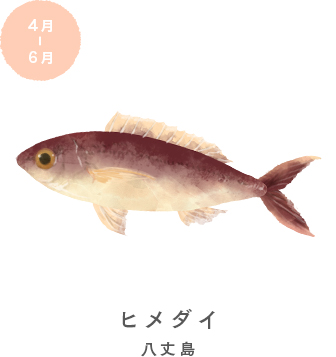
The lavender snapper goes by different names depending on the region. In the Kanto region it is also called an “ogodai”. While this is a somewhat rare fish, it is caught off the coast of Hachijo Island, and is considered a delicacy. Its white flesh is firm, sweet, and full-flavored, making it perfect for all types of cooking.
-
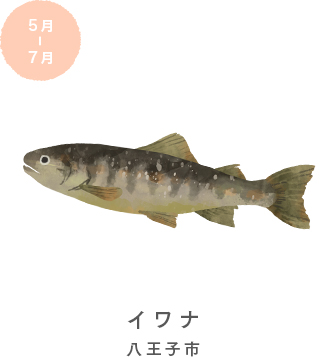
Char only live in the clean waters in the far upstream reaches of rivers. They are found in the upper Kita-Asakawa River in the west of Hachioji, and are also raised in fish farms. They can be eaten grilled and salted, or in raw sashimi form when fresh.
-
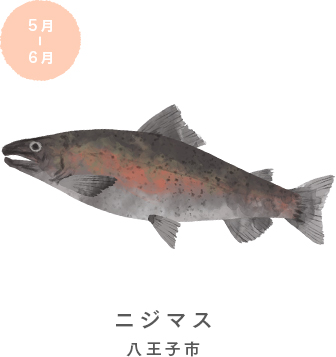
Rainbow trout eggs were presented to Japan from North America in 1877, and hatching and stocking spread across Japan. There are many stocked fishing ponds and mountain stream fishing stores in the Nishi-Tama District. Fish can be grilled and salted on the spot to enjoy their freshness.
-
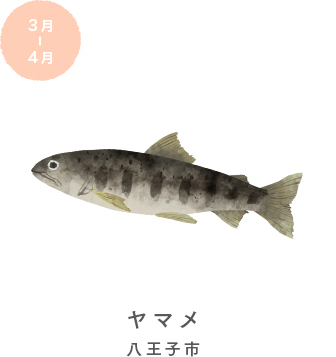
Masu salmon were first successfully farm raised in 1961 in Okutama. Technical advances since then have led to the development of Okutama masu salmon, which are larger than standard masu salmon. They can be grilled and salted or eaten raw as sashimi, and smaller masu salmon can be eaten deep-fried.
-
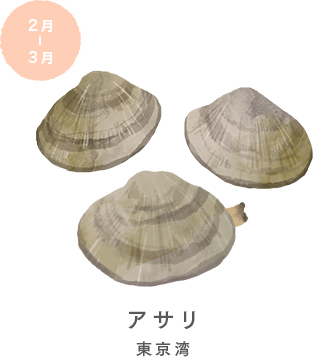
Asari clams, a popular food since the Edo era, used in dishes such as Fukagawa meshi, come from the inner part of the bay. These asari clams have distinctive shell patterns, primarily in black and white, which become prominent one or two days after the clams are caught.
-
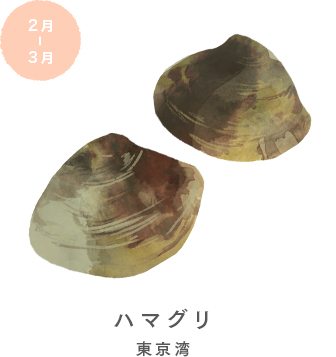
Hamaguri clams are caught in the Sanmaisu and Tama River Kawaguchi mud flats, and their natural habitats are spreading. They are rich in protein with well-balanced amino acids, while low in fat, making them a model high-protein, low-calorie health food.
-
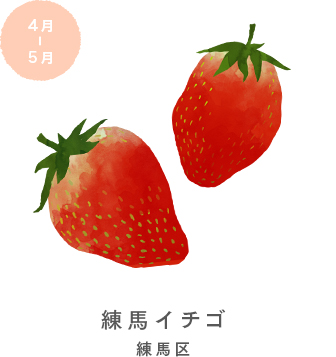
Strawberry branding began in Nerima Ward in 2005, and there are future plans for a strawberry-themed farm shop. There are currently several strawberry farmers, and strawberries can be bought at farmers’ markets and sellers’ markets.











